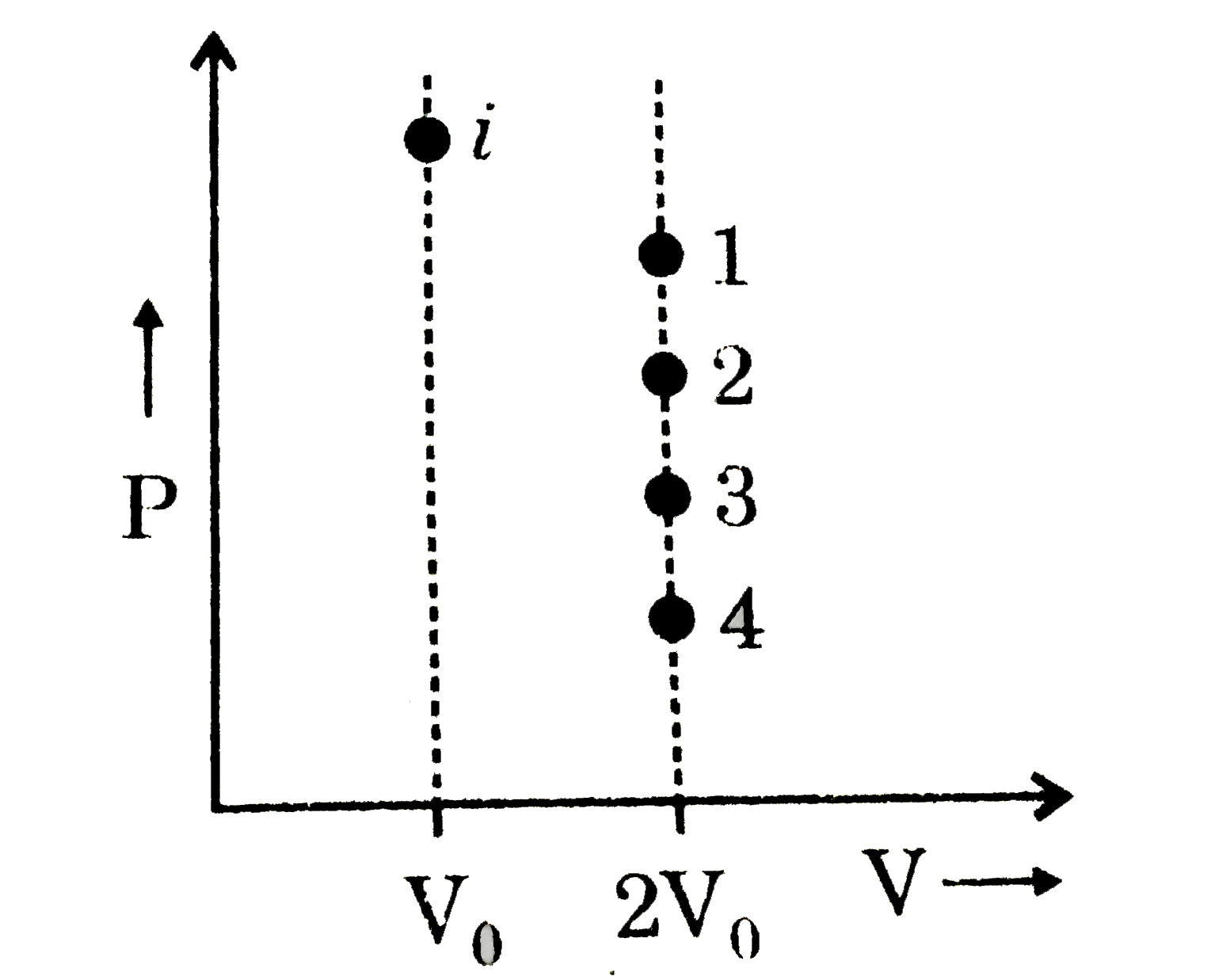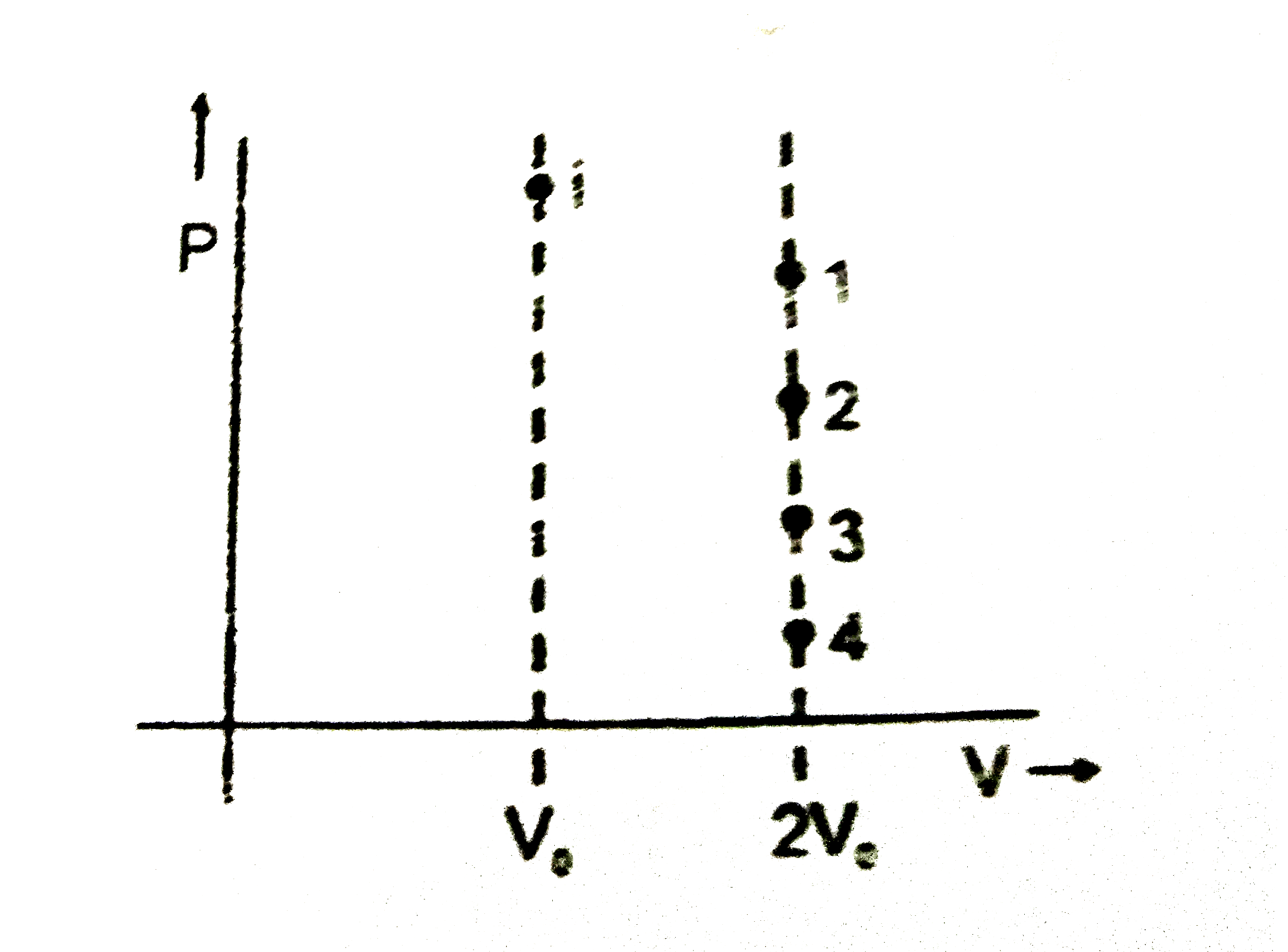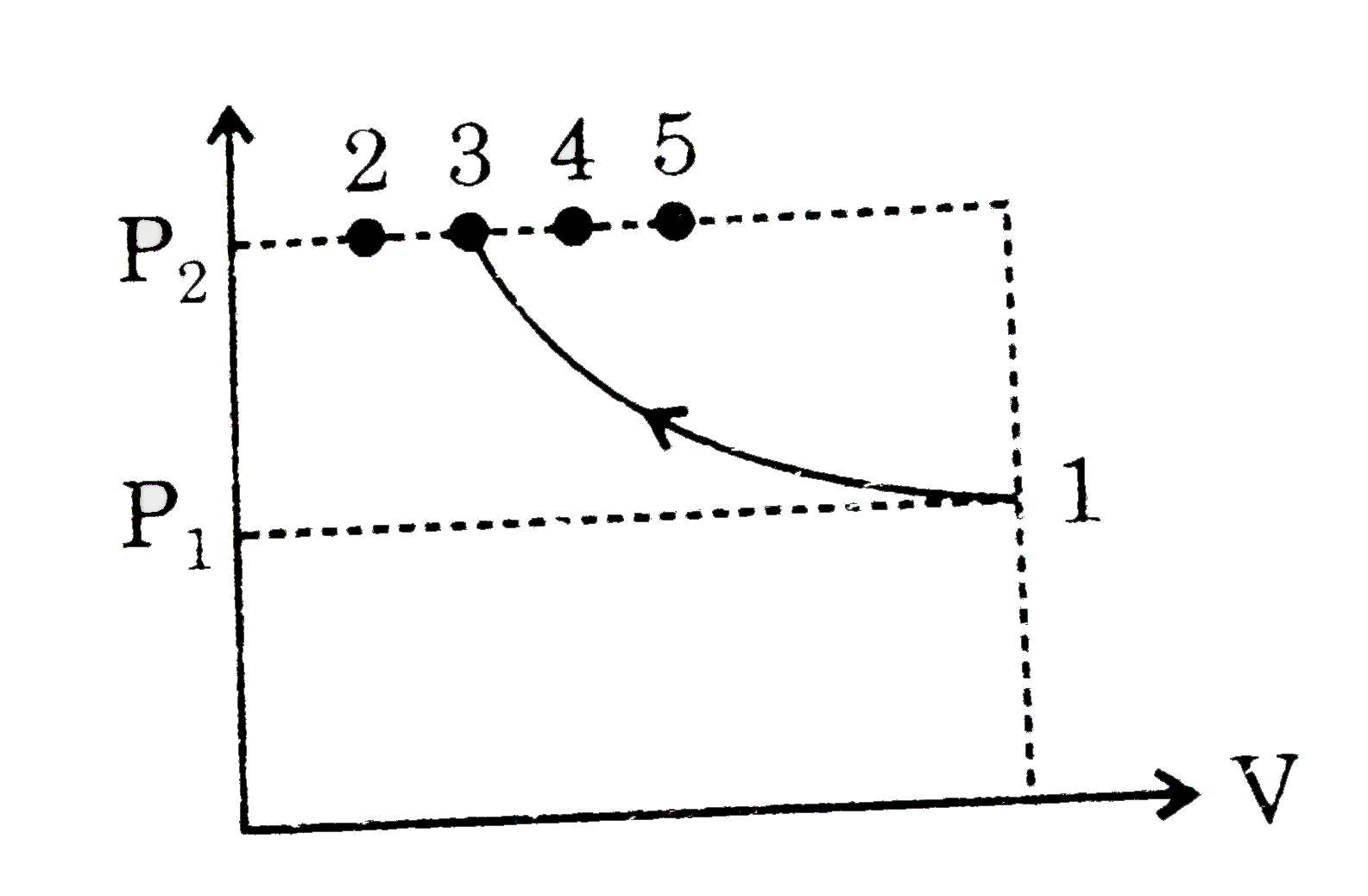A sample of gas is compressed from an initial volume of 2V0toV0 using three different processes.
First: Using reversing isothermal
Second : Using reversible adiabatic
Third : Using irreversible adiabatic under a constant external pressure ,than :
Final temerature of gas will be highest at the end of third process.
Final temperature of gas will be highest at the end of second process
Enthalpy change of sample will be highest in isothermal process. (magnitude wise)
Final pressure of gas will be highest at the end of second process.
The correct Answer is:A
Topper's Solved these Questions
Similar Questions
A sample of gas is compressed from an initial volume of 2v0 to v0 using three different processes.
First: Using reversible isothermal
Second: Using reversible adiabatic
Third: Using irreversible adiabatic under a constant external pressure thenView SolutionA gas is expanded from volume V1 to V2 through three different process:
a. Reversible adiabatic
b. Reversible isothermal
c. Irreversible adiabatic (against a constant external pressure Pex)
The correct option isView Solution
Knowledge Check
- Question 1 - Select One
A gas is expanded from volume V1 to V2 through three different process:
a. Reversible adiabatic
b. Reversible isothermal
c. Irreversible adiabatic (against a constant external pressure Pex)
The correct option isA[(Tf)Gas]Reversible isothermal>[(Tf)GaS]Reversible adiabatic>[(Tf)Gas]Irreversible adiabaticB[(Tf)Gas]Reversible isothermal>[(Tf)GaS]Irreversible adiabatic>[(Tf)Gas]Reversible adiabaticCwReversible isothermal >wIrreversible adiabatic>wReversible adiabaticD(Pf)Reversible isothermal>(Pf)Reversible adiabatic>(Pf)Irreversible adiabatic - Question 2 - Select One
A gaseous sample is generally allowed to do only expansion/compression type of work against its surroundings. The work done in case of an irreversible expansion ( in the intermediate stages of expansion/ compression the states of gases are not defined). The work done can be calculated using
dw=−PextdV
while in case of reversible process the work done can be calculated using
dw=-PdV where P is pressure of gas at some intermediate stages. Like for an isothermal reversible process, since
P=nRTV,so,
w=∫dw=−∫VfVinRTV.dV=−nRT In(VfVi)
Since,dw=PdV, so magnitude of work done can also be calculated by calculating the area under the PV curve of the reversible process in PV diagram.
If four identical samples of an ideal gas initially at similar state (P0,V0,T0) are allowed to expand to double their volumes by four different processes.

(P)By isothermal irreversible process
(Q) By reversible process having equation P2V= constant
(R) By reversible adiabatic process
(S)By irreversible adiabatic expansion against constant external pressure. Then in the graph shown the final state is represented by four different points then, the correct match can be :A1−P,2−Q,3−R,4−SB1−Q,2−P,3−S,4−RC2−R,3−Q,4−P,1−SD3-Q,1-P,2-S,4-R - Question 3 - Select One
A gaseous sample is generally allowed to do only expansion/compression type work against its surroundings The work done in case of an irreversible expansion ( in the intermediate stages of expansion/compression the states of gases are not defined). The work done can be calculated using
dw=−PextdV
while in case of reversible process the work done can be calculated using
dw=−PdV where P is pressure of gas at some intermediate stages. Like for an isothermal reversible process. Since P=nRTV, so
w=∫dW=−vf∫vinRTV.dV=−nRTln(VfVi)
Since dw=PdV so magnitude of work done can also be calculated by calculating the area under the PV curve of the reversible process in PV diagram.
If four identical samples of an ideal gas initially at similar state (P0,V0,T0) are allowed to expand to double their volumes by four different process.
I: by isothermal irreversible process
II: by reversible process having equation P2V= constant
III. by reversible adiabatic process
IV. by irreversible adiabatic expansion against constant external pressure.
Then, in the graph shown in the final state is represented by four different points then, the correct match can be
 A1-I, 2-II,3-III,4-IVBI-II,2-I,3-IV,4-IIIC2-III,3-II,4-I,1-IVD3-II,1-I,3-IV,4-II
A1-I, 2-II,3-III,4-IVBI-II,2-I,3-IV,4-IIIC2-III,3-II,4-I,1-IVD3-II,1-I,3-IV,4-II
A gaseous sample is generally allowed to do only expansion/compression type work against its surroundings The work done in case of an irreversible expansion ( in the intermediate stages of expansion/compression the states of gases are not defined). The work done can be calculated using
dw=−PextdV
while in case of reversible process the work done can be calculated using
dw=−PdV where P is pressure of gas at some intermediate stages. Like for an isothermal reversible process. Since P=nRTV, so
w=∫dW=−vf∫vinRTV.dV=−nRTln(VfVi)
Since dw=PdV so magnitude of work done can also be calculated by calculating the area under the PV curve of the reversible process in PV diagram.
If four identical samples of an ideal gas initially at similar state (P0,V0,T0) are allowed to expand to double their volumes by four different process.
I: by isothermal irreversible process
II: by reversible process having equation P2V= constant
III. by reversible adiabatic process
IV. by irreversible adiabatic expansion against constant external pressure.
Then, in the graph shown in the final state is represented by four different points then, the correct match can be
 View Solution
View SolutionAn ideal gas is taken from the same initial pressure P1 to the same final pressure P2 by four different process. If it is known that point 3 corresponds to a reversible adiabatic, point 4 corresponds to a single step adiabatic and point 2 corresponds to reversible isothermal. Select the incorrect option (s).
 View Solution
View SolutionA gas is expanded form volume V0→2V0 under three different processes as shown in the figure . Process 1 is isobaric process process 2 is isothermal and and process 3 is adiabatic .
Let ΔU1,ΔU2andΔU3 be the change in internal energy of the gs in these three processes then
 View Solution
View SolutionThe ratio of slopes of P−V plots for reversible adiabatic process and reversible isothermal process of an ideal gas is equal to :
View SolutionA gaseous sample is generally allowed to do only expansion/compression type of work against its surroundings. The work done in case of an irreversible expansion ( in the intermediate stages of expansion/ compression the states of gases are not defined). The work done can be calculated using
dw=−PextdV
while in case of reversible process the work done can be calculated using
dw=-PdV where P is pressure of gas at some intermediate stages. Like for an isothermal reversible process, since
P=nRTV,so,
w=∫dw=−∫VfVinRTV.dV=−nRT In(VfVi)
Since,dw=PdV, so magnitude of work done can also be calculated by calculating the area under the PV curve of the reversible process in PV diagram.
There are two sample of same gas initially at same initial state. Gases of both the sample are expanded. Ist sample using reversible isothermal process and IInd sample using reversible adiabatic process till final pressures of both the samples become half of the initial pressure , then :View Solution

